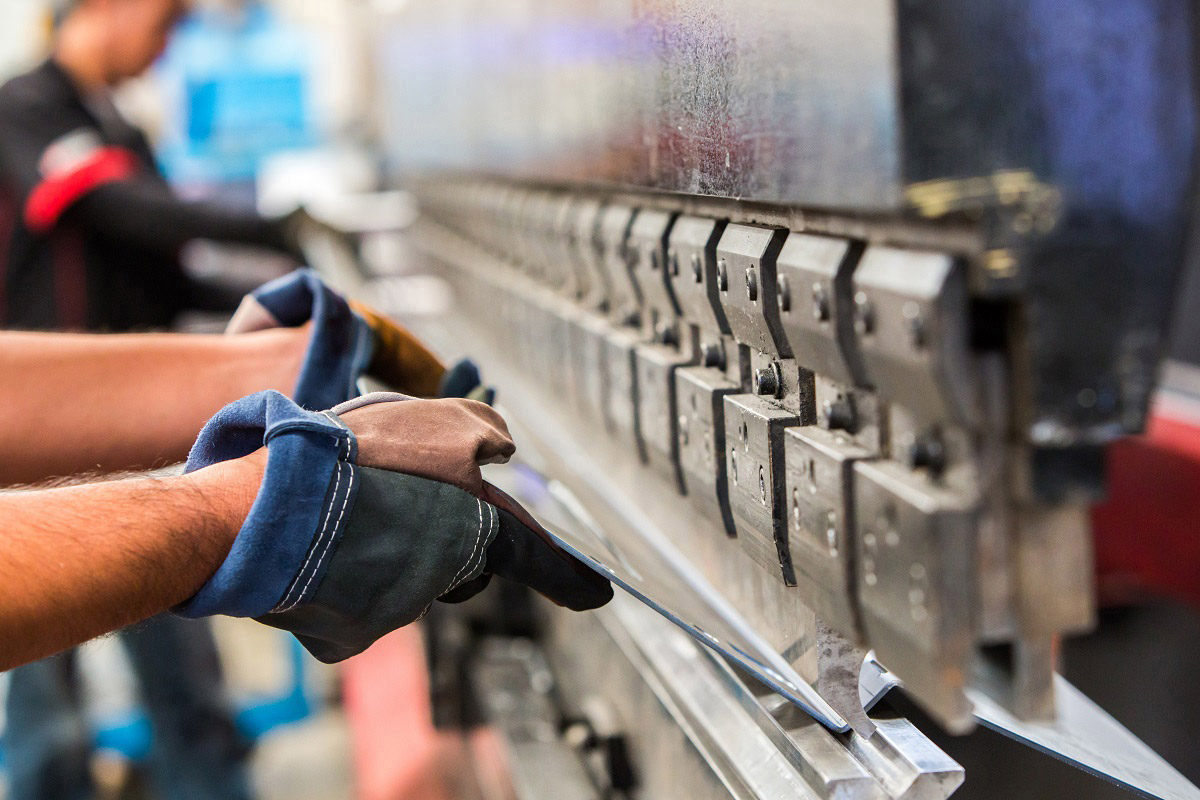Metal Stamping: Technologies Driving Sector Development
Metal Stamping: Technologies Driving Sector Development
Blog Article
Maximizing Performance and Quality With Cutting-Edge Metal Stamping Approaches
In the realm of metal stamping, the search of operational quality through the assimilation of ingenious strategies is extremely important. As markets evolve and demands for accuracy and efficiency rise, staying in advance of the curve ends up being a strategic imperative. By accepting cutting-edge innovations and procedure enhancements, organizations can unlock brand-new levels of performance and product quality. The crossway of advanced steel stamping methods, automated systems, rigid high quality controls, and lean production principles uses a tantalizing glance into the future of manufacturing. This convergence holds the assurance of not just conference however surpassing sector standards, establishing the stage for unmatched performance and client contentment.
Advanced Metal Stamping Technologies
In the world of metal stamping, the combination of cutting-edge innovations has actually changed the industry, improving accuracy and effectiveness in manufacturing procedures - Metal Stamping. Advanced metal marking modern technologies have played a critical function in boosting the capabilities of suppliers, enabling more complex styles and greater manufacturing rates
One of the most significant improvements in steel marking technology is the application of computer system numerical control (CNC) systems. CNC systems allow accurate control over the stamping procedure, leading to accurate and regular manufacturing of complicated parts. Additionally, making use of servo presses has actually produced enhancements in energy efficiency and reduced cycle times, further enhancing the manufacturing procedure.
Moreover, the integration of automation and robotics has structured metal marking operations by raising efficiency and minimizing the risk of mistakes. Automated systems can carry out jobs with speed and precision, resulting in boosted general efficiency in the assembly line.
Automated Processes for Efficiency
Use of automated processes in steel marking procedures has dramatically enhanced efficiency and productivity in making facilities (Metal Stamping). Automated systems have actually revolutionized the steel marking industry by streamlining processes, lowering hands-on treatment, and minimizing the margin of error. These automated remedies encompass a series of modern technologies, including robot arms, CNC equipments, and computerized control systems, that work cohesively to implement elaborate marking jobs with accuracy and speed
One main benefit of automated processes in steel stamping is the constant quality they deliver. By removing human error and variants in manufacturing, automated systems make sure that each stamped part satisfies exact specs with minimal flaws. Automation makes it possible for continuous operation, substantially reducing downtime for tool changes and upkeep, thereby making best use of overall efficiency.
In addition, automated procedures boost safety in metal marking procedures by lessening the requirement for hands-on handling of heavy materials and sharp tools. This not just safeguards workers yet also adds to a more structured and efficient workflow. In verdict, the assimilation of automated processes in steel marking procedures is vital for accomplishing ideal performance, top quality, and security standards in modern-day production settings.
High Quality Control Steps in Stamping
Given the emphasis on constant top quality and efficiency accomplished via automated procedures in steel stamping operations, carrying out robust top quality control measures becomes imperative to promote criteria and ensure accuracy in stamped parts. Quality control in metal stamping involves a multi-faceted method my sources to assure the integrity and precision of the last products. By incorporating these measures into steel marking operations, makers can continually generate top quality stamped components that fulfill the stringent requirements of modern industries.
Enhancing Precision Through Development
To accomplish unequaled precision in metal stamping procedures, introducing innovations are constantly being developed and integrated into the manufacturing workflow. Advanced innovations such as laser cutting systems and computer mathematical control (CNC) makers have changed the method steel elements are stamped with utmost precision. By utilizing laser reducing technology, suppliers can accomplish complex and complex designs with micron-level accuracy, guaranteeing that each stamped component satisfies the most strict high quality standards.

In addition, using simulation directory software allows manufacturers to analyze and optimize stamping processes before real production, identifying prospective locations for enhancement and adjust specifications to accomplish maximum accuracy. By welcoming these cutting-edge innovations, producers can improve precision, rise performance, and supply high-quality stamped products that meet one of the most rigorous requirements of contemporary markets.
Executing Lean Manufacturing Practices
Integrating lean production practices right into steel stamping procedures can lead to structured production procedures and increased overall effectiveness. By concentrating on eliminating waste, enhancing sources, and continuously enhancing processes, metal stamping business can boost productivity and high quality while decreasing costs.
Furthermore, lean production techniques encourage a culture of constant renovation within the organization. By empowering workers to recognize and address inadequacies, companies can make incremental adjustments that lead to considerable productivity gains with time. Carrying out tools such as five, Kanban systems, and value stream mapping can help streamline procedures, decrease preparations, and boost general high quality in steel stamping procedures.
Conclusion
In conclusion, the use of sophisticated steel stamping innovations, automated processes, quality assurance steps, advancement for accuracy enhancement, and execution of lean manufacturing practices are important for taking full advantage of effectiveness and high quality in metal stamping operations. These strategies ensure that products are generated with precision, uniformity, and cost-effectiveness. By incorporating these sophisticated methods, makers navigate to these guys can remain competitive in the industry and meet the needs of consumers properly.

Offered the emphasis on regular quality and effectiveness attained via automated processes in steel marking operations, executing robust top quality control actions becomes imperative to support requirements and guarantee accuracy in stamped parts. Executing tools such as 5S, Kanban systems, and value stream mapping can help streamline operations, reduce lead times, and enhance total top quality in steel marking procedures.
In final thought, the use of innovative steel marking technologies, automated processes, quality control actions, advancement for accuracy enhancement, and implementation of lean manufacturing techniques are critical for taking full advantage of effectiveness and quality in steel marking operations.
Report this page